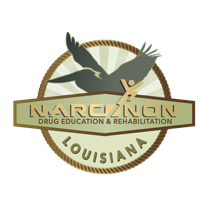What You Need to Know About Inhalants

When you think of substance abuse, you probably think of cocaine, heroin, pain pills or alcohol, but probably not inhalants. However, inhalants are more prevalent than one might think.
A U.S. survey, combining data from 2002 to 2006, found that an annual average of 593,000 teens from ages 12 to 17 used inhalants for the first time. More than 22.9 million Americans have experimented with inhalants at some point in their lives. One state averaged more than 3,800 emergency room visits and 450 hospitalizations a year due to inhalant poisoning in 2008.
By the time students in the U.S. reach the 8th grade, 1 in 5 have used inhalants. In 2007, inhalants were the substance most frequently abused by youth ages 12 or 13. 22% percent of inhalant abusers who die of sudden sniffing death syndrome had no history of previous inhalant abuse and were first-time users.
Most people don’t realize that the most common inhalants are products found in almost every household and in offices on a regular basis. Some examples are spray paint, markers, glues, cleaning fluids, gasoline and computer dusters.
Some of the health effects of abusing inhalants include:
Short-Term Effects:
- Confusion
- Nausea
- Slurred speech
- Lack of coordination
- Euphoria
- Dizziness
- Drowsiness
- Disinhibition (a lack of restraint which results in disregard for social conventions, impulsivity, and poor judgment)
- Lightheadedness
- Hallucinations or delusions
- Headaches
- Death from asphyxiation, suffocation, convulsions, seizures, coma or choking
Effects of Inhaling Nitrates:
- Enlarged blood vessels
- Enhanced sexual pleasure
- Increased heart rate
- Brief sensation of heat or excitement
- Headaches
- Dizziness
Long-Term Effects:
- Liver and kidney damage
- Bone marrow damage
- Limb spasms due to nerve damage
- Brain damage from lack of oxygen that can cause problems with thinking, movement, vision, and hearing
Other Health-Related Issues:
- Pregnancy—Low birth weight
- Bone problems
- Delayed behavioral development due to brain problems
- Altered metabolism
- Body composition
Withdrawal Symptoms:
- Nausea
- Loss of appetite
- Sweating
- Tics
- Difficulty sleeping
- Mood changes
With some exceptions, teens and those younger, are more likely to try inhalants largely due to easy access. So make sure to watch for the signs. Inhalants, as well as easily obtainable, are very dangerous and potentially life-threatening. If you have any questions or know someone that is struggling with addiction, please don’t wait to get them help. It may be too late.
